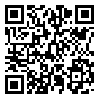BibTeX | RIS | EndNote | Medlars | ProCite | Reference Manager | RefWorks
Send citation to:
URL: http://ijpcp.iums.ac.ir/article-1-1508-en.html
2- Guilan University
3- Guilan University of Medical Sciences
Objectives: The aim of this research was to examine the dimensions of axis I disorders during the first four months after Traumatic Brain Injury (TBI) and mental states after TBI. Method: Overall, 238 patients (43 females and 195 males) with TBI, in a descriptive-longitudinal study, were selected by consecutive sampling procedure and each of them undergone medical examinations. After 4 months of follow-up, 65.1% (155 cases) of the patients referred to a psychiatrist to determine the nature of their mental disorder due to TBI, using a structured clinical interview, based on the Diagnostic and Statistical Manual of Mental Disorders, 4th ed. (DSM-IV) . Results: The results showed that 75.5% (117 cases) of the patients had post-injury mental disorders secondary to TBI. Of these, 88 patients (75.2%) showed the comorbidity of mental disorders. However, the most common mental disorders due to TBI included personality change (58.6%), mood disorders (32.3%), anxiety disorders (20%), sleep disorders (19.3%), chronic amnesia (12.9%) and somatoform disorders (1.3%). Delirium, eating and psychotic disorders due to TBI, each up to 0.64%, were also diagnosed. Conclusion: The high frequency of mental disorders is evident in the acute phase after TBI, along with many novel cases of personality changes, mood and anxiety disorders. Therefore TBI patients must be monitored and evaluated at least in a 4-month period after the trauma to reduce the risk of mental disorders incident.
Received: 2012/07/9 | Published: 2012/07/15
| Rights and permissions | |
 |
This work is licensed under a Creative Commons Attribution-NonCommercial 4.0 International License. |



